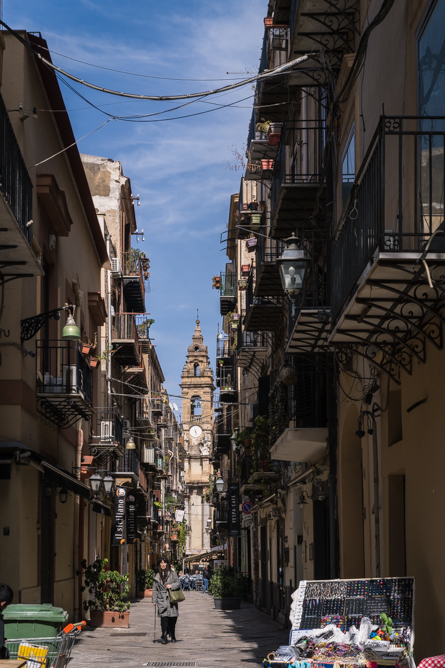
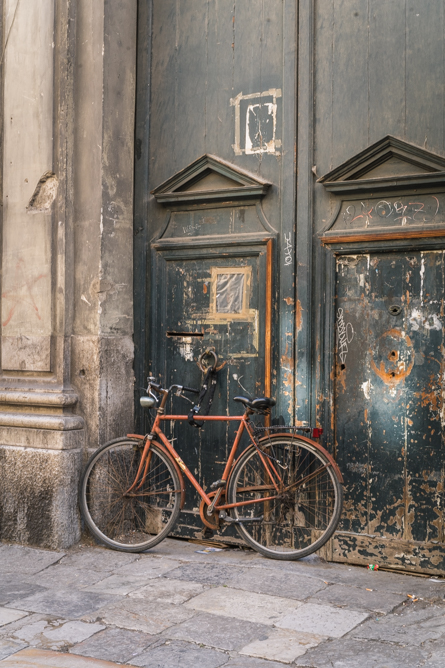
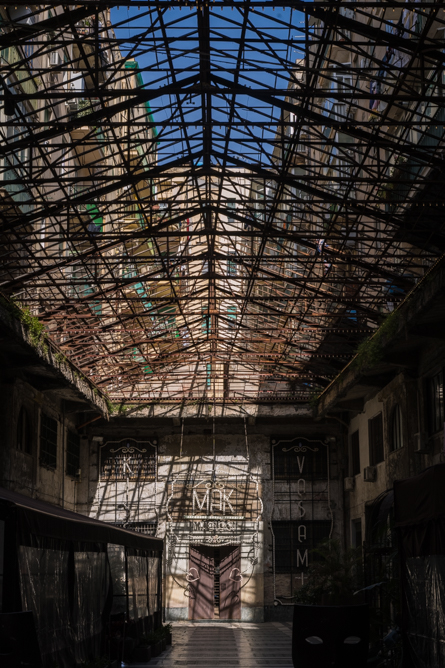
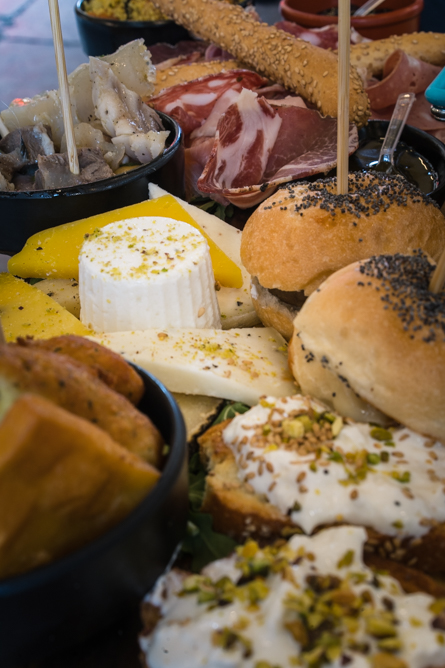
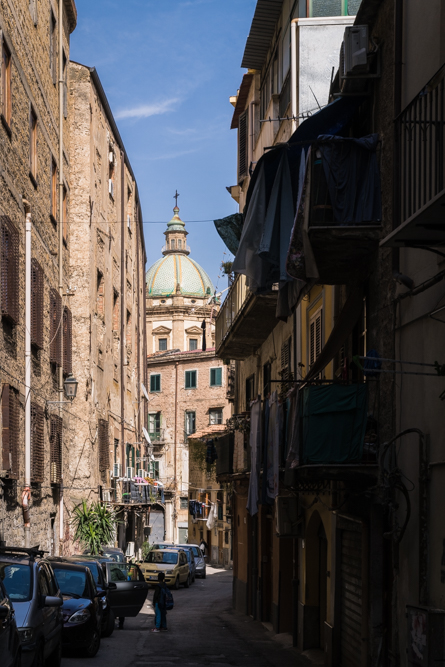
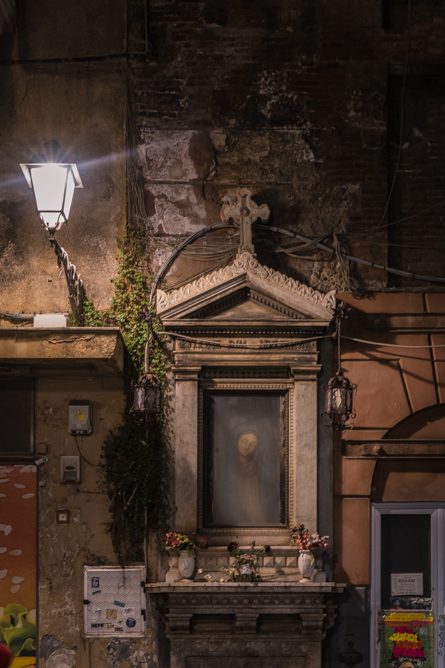
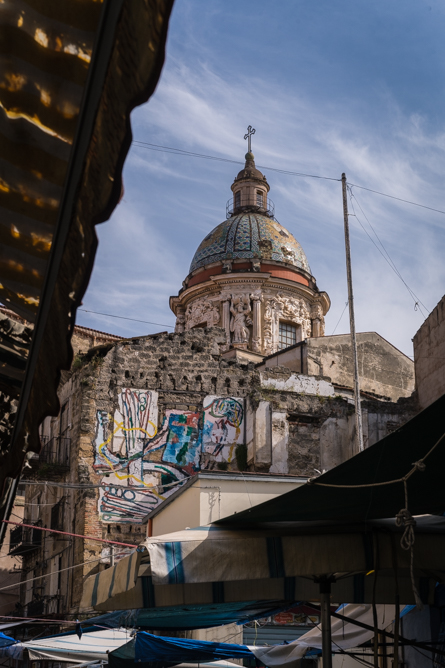
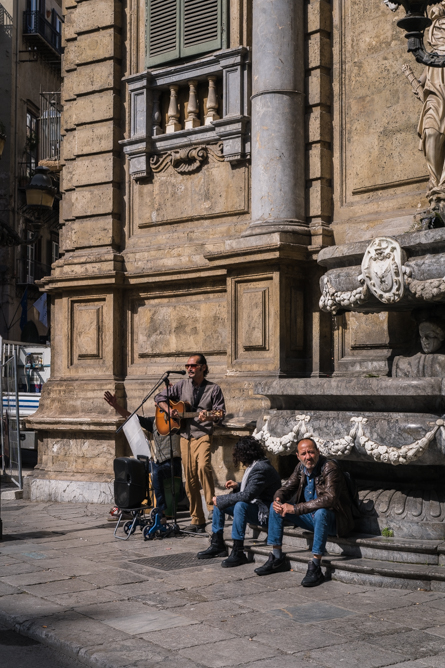
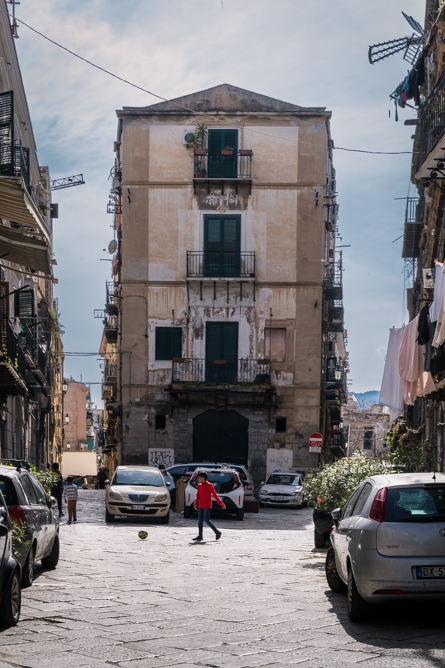
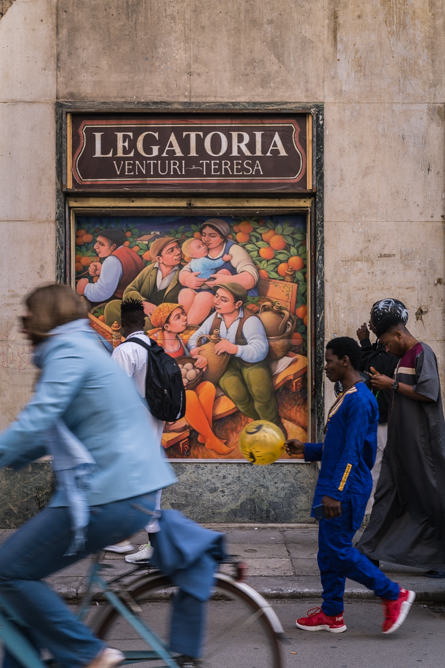
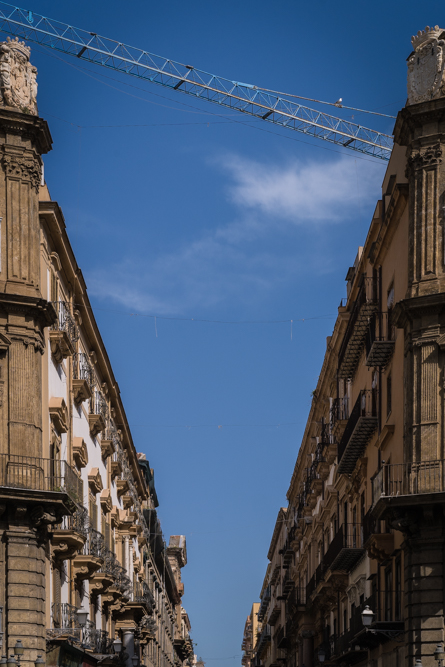
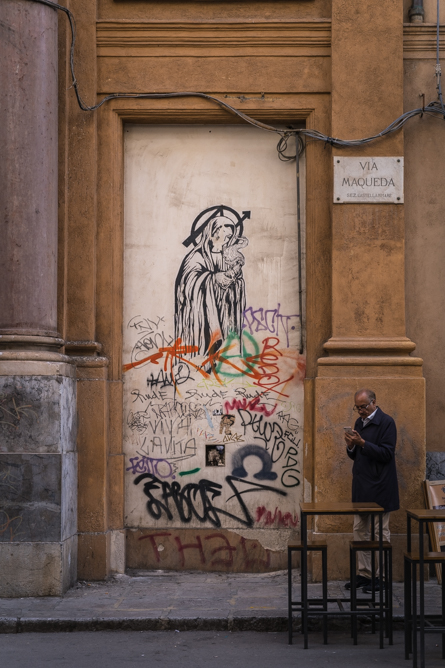

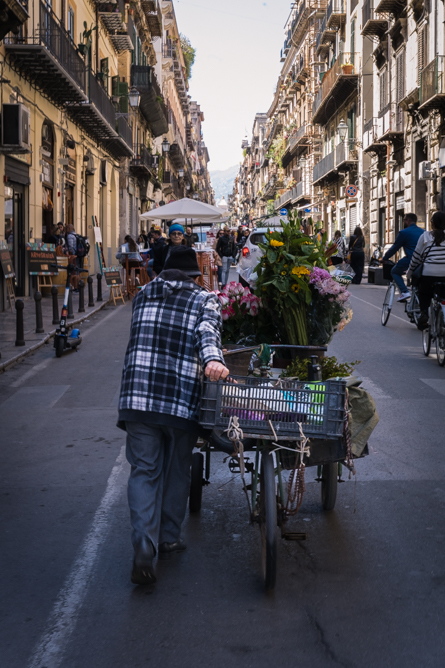
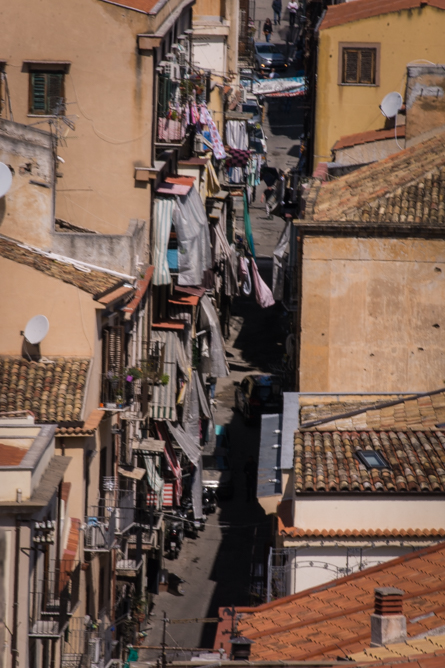

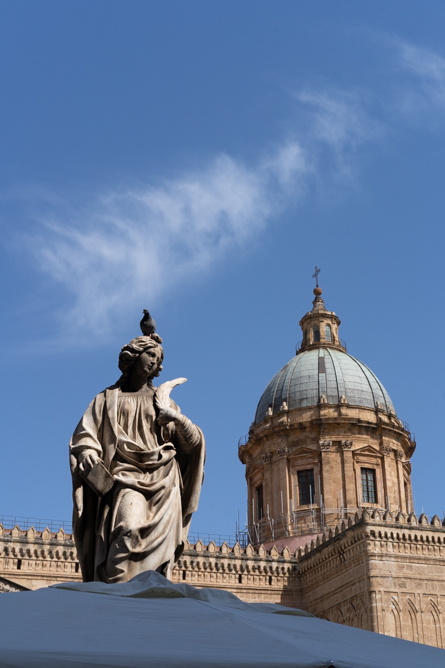
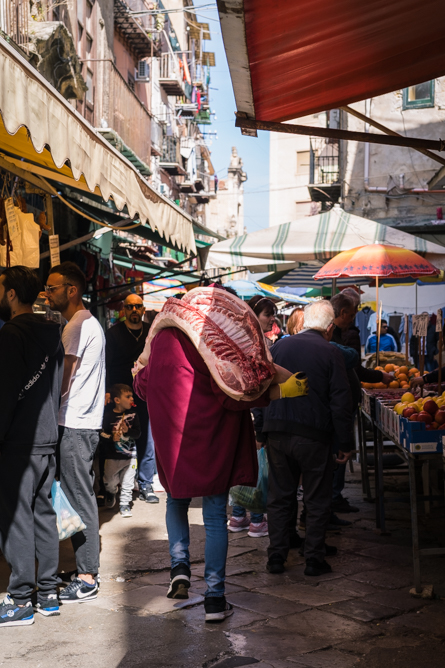
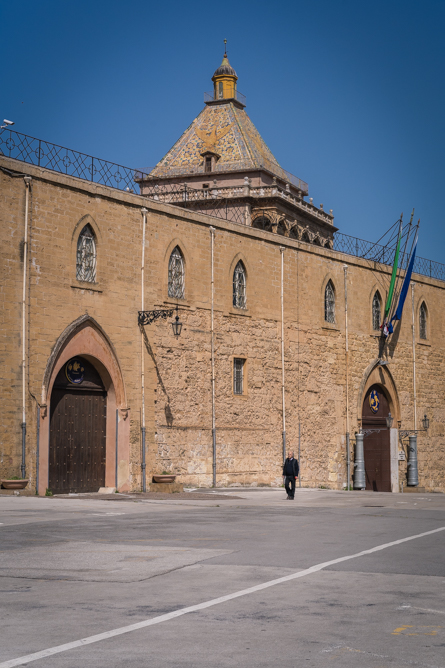
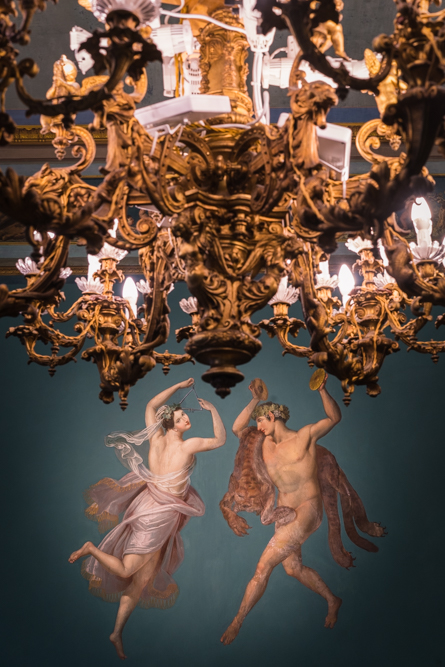


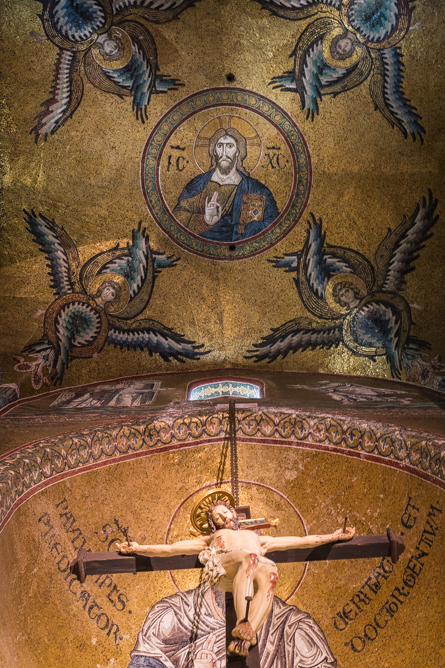
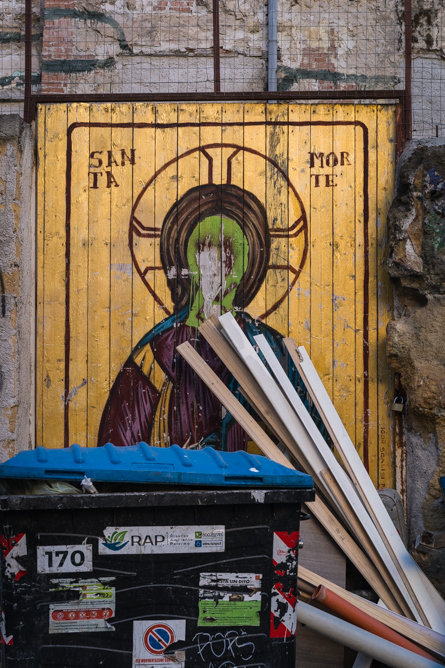

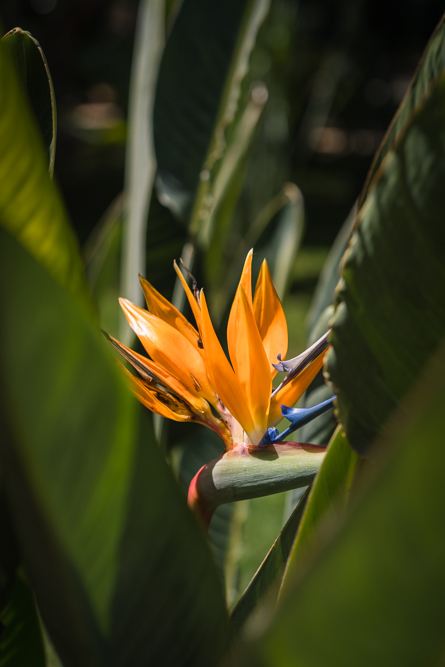
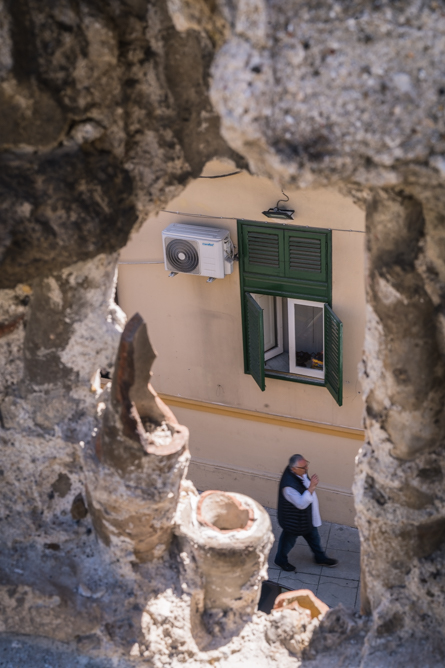
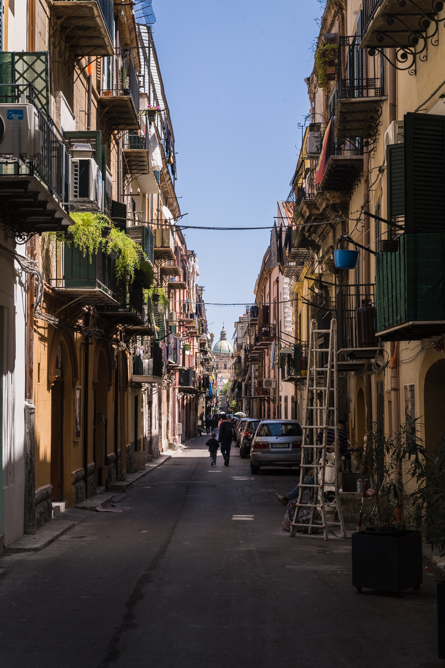
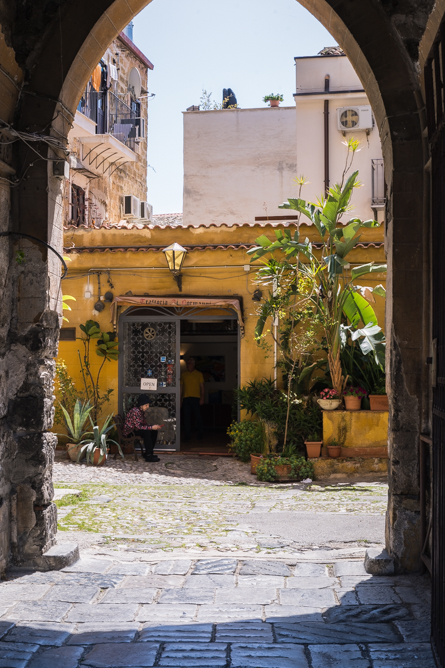
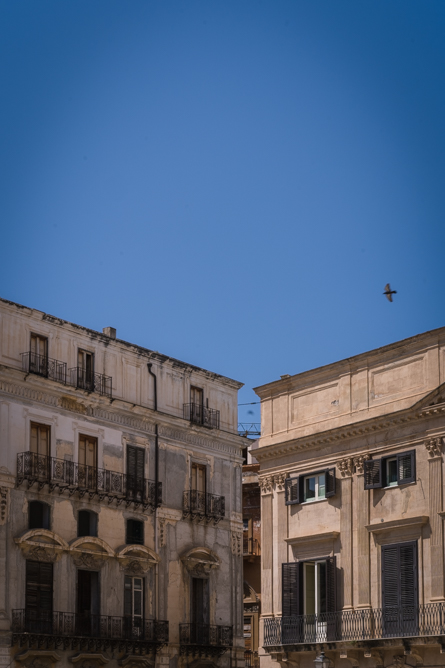
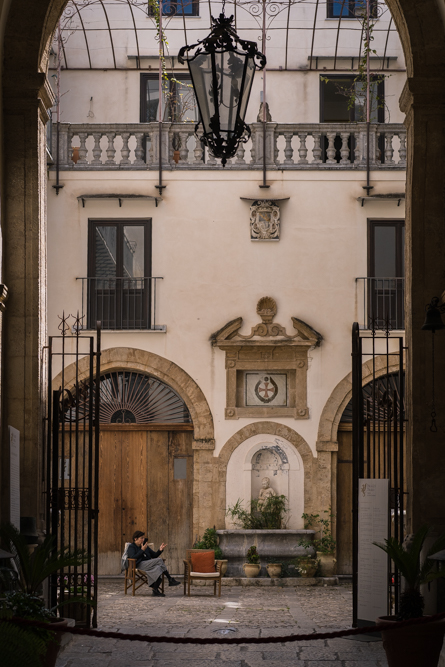
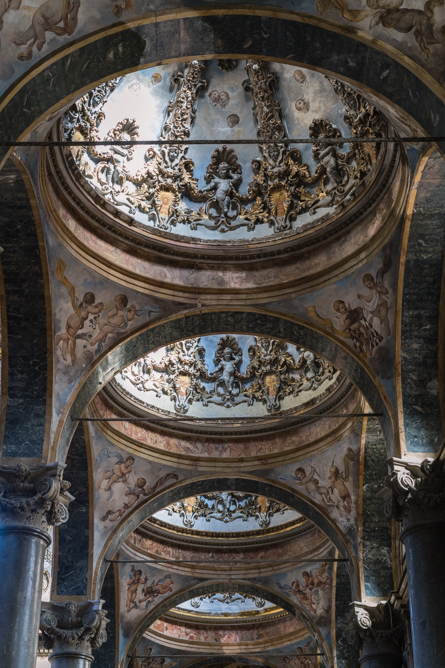
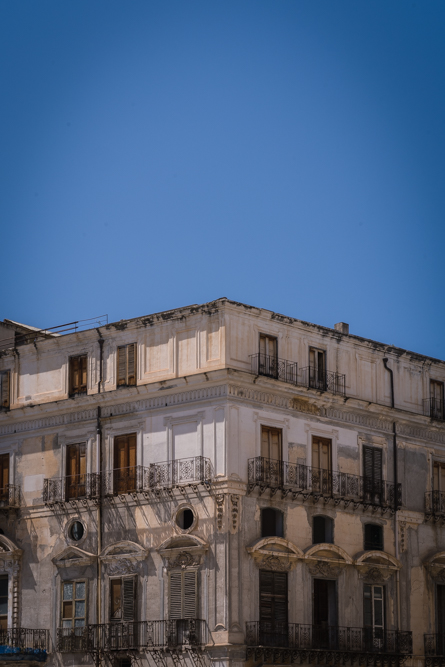
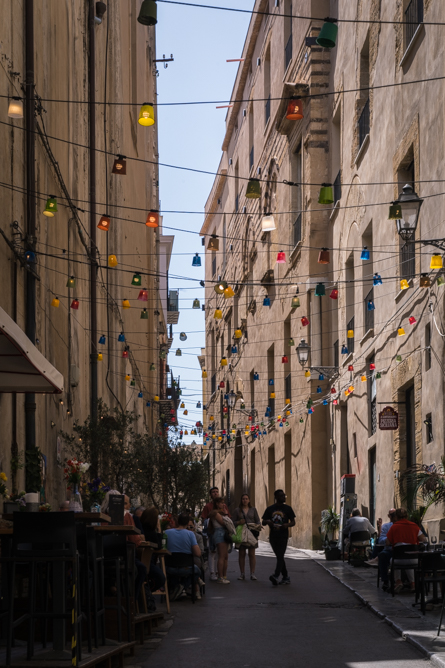
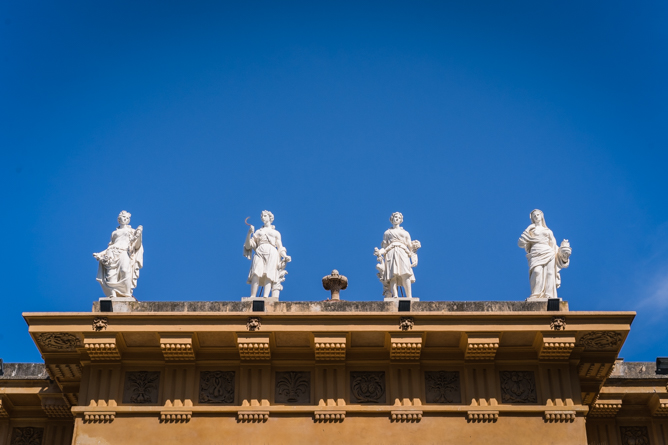
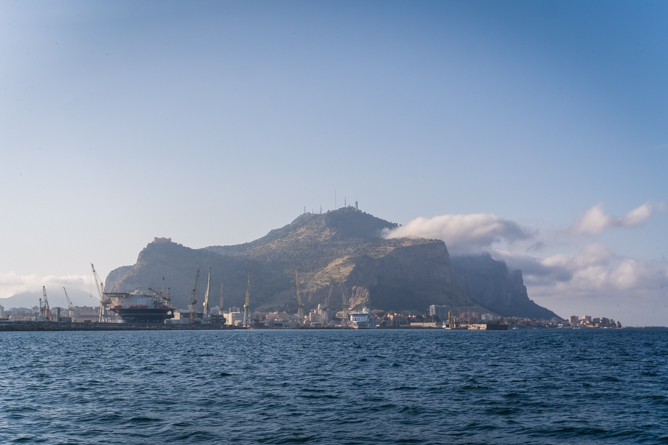

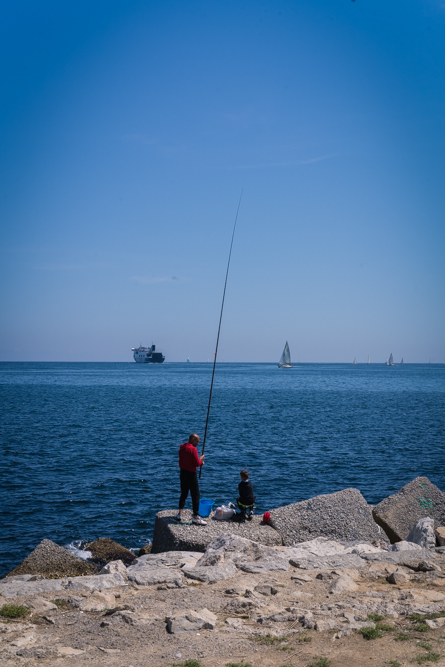
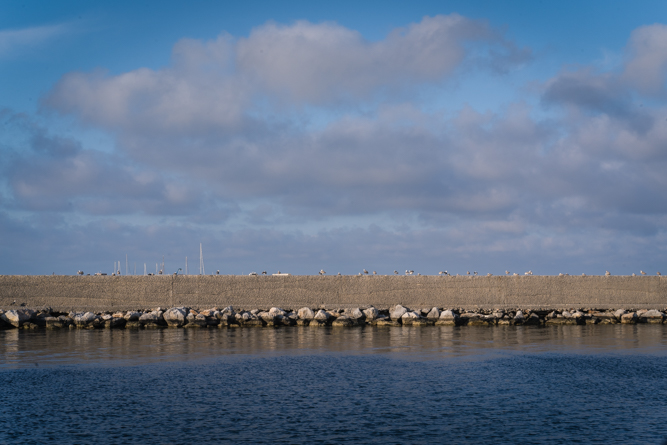
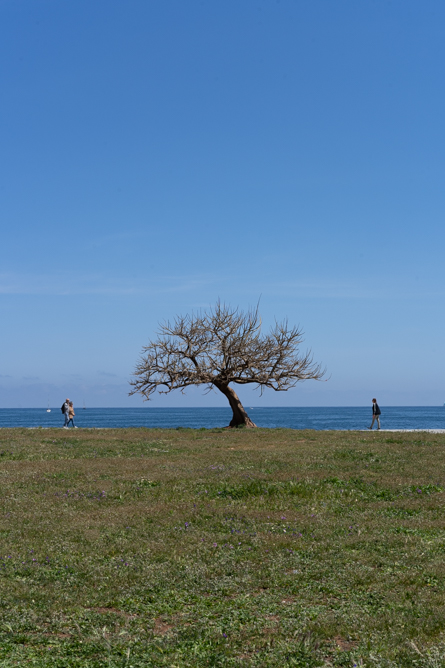
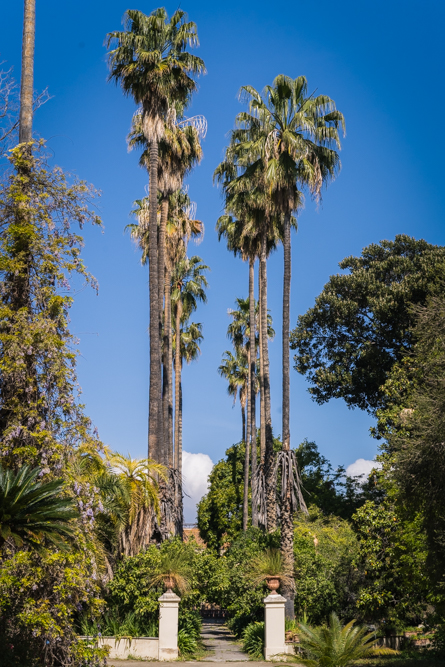
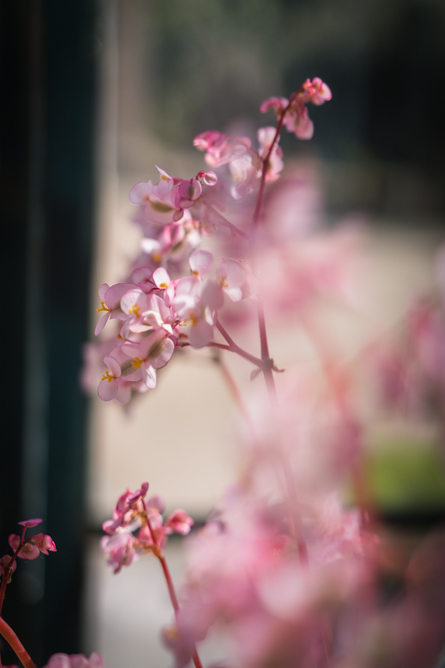
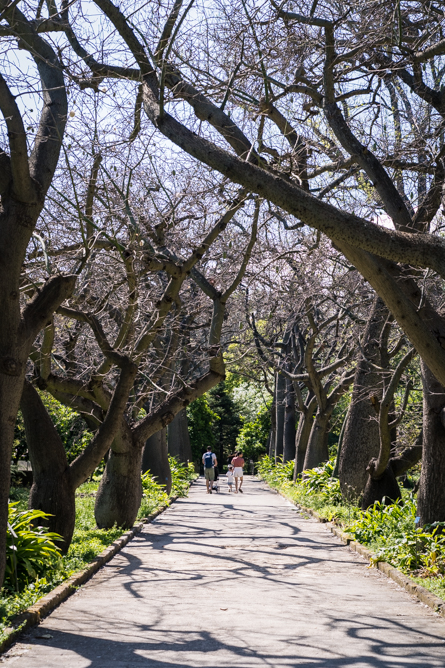
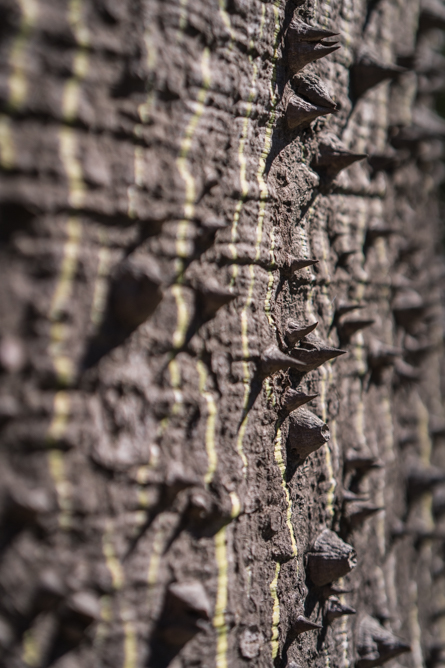
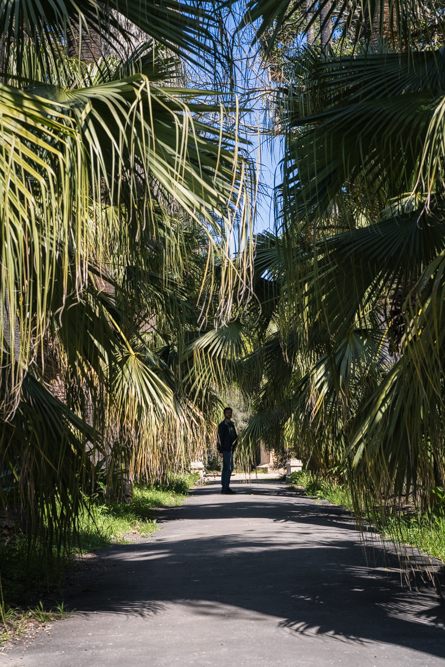
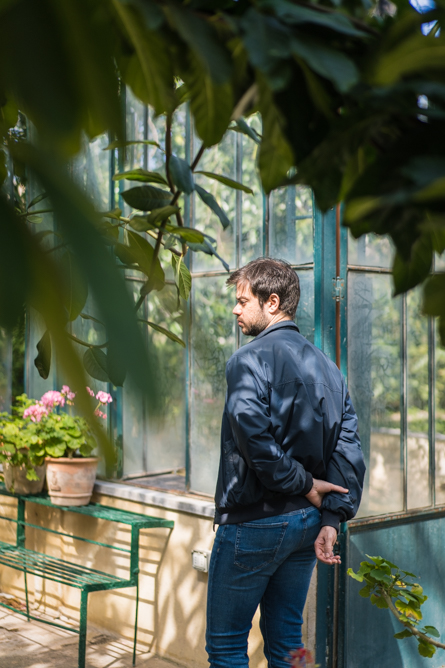
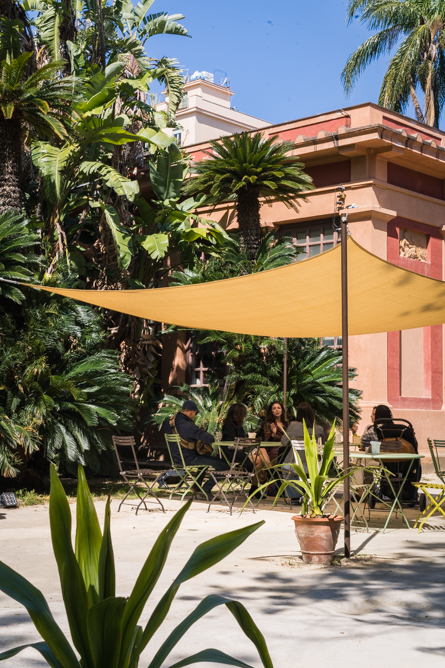
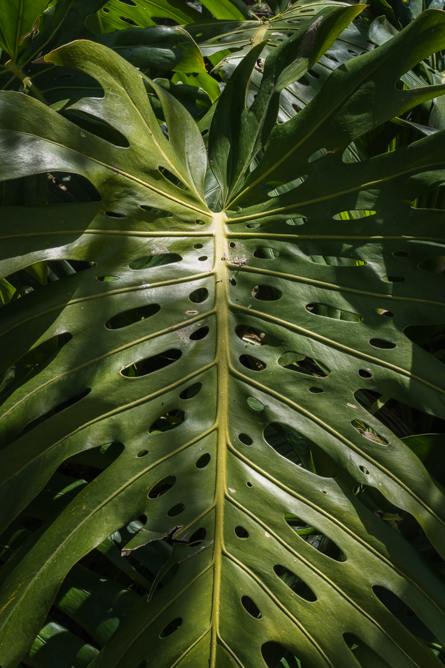
Palermo Street Photography
Contrasts and beauty of the city found in the side streets
I visited Palermo at the end of April. The main streets were full of people and chaos. The diversity inherited from the ancestors – Roman, Germanic, Slavic, Nordic and Arab – was delightful. However, the side streets were completely empty. Shabby facades, laundry moving lazily in the wind and long shadows further enhanced the apocalyptic atmosphere. Everything seemed faded by sun and time. If anywhere the sacred meets the profane, it is here. Temples next to markets with meat carcasses hanging out. Byzantine golden interiors coexist with street art. Beautiful historic architecture is often covered with garbage.
The city has a very unclear relationship with the sea, which, although so close, is not an integral part of it. Maybe because buildings located on flat terrain effectively isolate people from water? You get a similar impression when looking from the sea – the city is surrounded by a wall of facades and only the domes indicate that it has depth. One of the most beautiful places we visited was the botanical garden. Exotic (to me) plants took on fanciful shapes as they climbed towards the spring sun. I also liked the silence that fell in their shadow.
Of course, Palermo is also a culinary journey, dominated by street food. You can’t ignore the arancini at KePalle. But if you would rather sit down, it is worth visiting Il Cambusone. An aperitivo on a boat (Mini Crociere) at sunset with a view of Palermo was also a beautiful experience.
Palermo Travel Palette
Palermo street photography helps you get to know the city and observe its colours. The first one I noticed was gold – ubiquitous in Byzantine and Baroque interiors. It reminds us of the city’s former glory, now somewhat forgotten. The city streets are dominated by sun-faded beiges – represented in my palette by the colour almond. Like Neapolitan yellow, it has a pink tint to it. Palermo is a port city, so there was also blue – the deep shade of lapis lazuli contrasts with the bright colours of the city. The palette is complemented by green Mediterranean plants. The colour of myrtle has a cold, blue tint.
